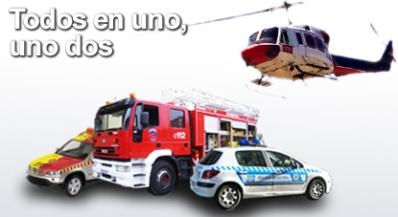

Improving Safety by Sharing Best Practices
All experts agree that sharing best practices and replicating success stories is one of the most effective ways to improve safety. This strategy can be applied both in the field of protection and in preventing occupational and fire hazards and all kinds of emergency. The president of AES, the general secretary of ASEPAL, the director of the Security and Emergencies Agency Madrid 112 and the president of Tecnifuego, explained how they do it.
Working together and keeping to the rules are some of the good practices promoted by the Spanish Association of Security Companies, according to its president, Antonio Pérez Turró. “Collaboration between the different sectors has been one of the mainstays of AES since its foundation in 1982, especially in terms of development and compliance with the standards we apply in this industry, which includes physical and IT security, manufacturing, installation, maintenance and alarm systems.”
Pérez Turró pointed out that “AES has always promoted, as one of its guiding principles, the use of good practices in our trade. So much so that we have a code of ethics that companies have to sign when they join our association. In addition, he emphasised the importance of “having external bodies audit good practices and compliance with regulations, and to certify products and services.”
The results of those good practices are evident. The AES president gave two examples: “Today, ATMs are much more difficult to attack than they were 25 years ago because all those involved, manufacturers and banks, decided in the past to ensure high levels of quality and strength.” Efforts to raise the quality of IT security mean that now we can use “high-definition cameras to allow us to better identify criminals,” a fundamental issue, especially when the image can be used as evidence in a court of law.
Personal Protective Equipment
Luis Gil, General Secretary of ASEPAL (Association of Personal Protective Equipment Companies), said that “sharing good practices encourages companies to start their own projects and initiatives with confidence about the results, and makes it easier to implement them. In turn, success stories are motivating and encourage companies to want to be better every day.”
In Gil’s view, training is one of the best practices in prevention. For example, “It’s essential to constantly inform employees about using personal protective equipment (PPE), as using the wrong equipment or using the right equipment in the wrong way can increase exposure to risk.”
Floods and Emergencies
Carlos Novillo highlighted several success stories in disaster management carried out by the Madrid Regional Government through its Security and Emergency Agency, Madrid 112 (ASEM112), of which he is the director. Some of the most recent events they have managed are the floods at Arganda and Valdemoro: “48 hours beforehand, ASEM112 warned councils, authorities and motorists about the rainfall forecast for the hours ahead, to warn them and enable them to begin the existing emergency and civil protection strategies. As it was well managed, nobody was injured by these rainstorms, but the material damage led to 1499 emergency calls that led to 196 actions by the Madrid Regional Fire Service.” The success was based on following the protocols for coordination between the different security and emergencies bodies, under the direction of ASEM112.
Novillo also gave some other examples of successful management: “forest fire fighting brigades, the major snowfalls in 2017 and industrial fires (tires in Seseña, Arganda waste factory explosion and fires in recycling plants in Alcorcón and Alcalá de Henares) which triggered the Regional Government’s emergency plans with joint action coordinated by ASEM 112, without any injury or loss of life, either among the population or among the members of the emergency services.”
Fire Protection
Adrián Gómez, president of Tecnifuego (Spanish Association of Fire Protection Companies), stressed that good practices need to begin by choosing specialist companies that meet the requirements of the Regulation on Fire Protection Installations, RIPCI. “Fires don’t give you a second chance, so no amount of fire protection equipment can ‘save the situation’: you really do need the help of specialist companies.”
Gómez explained that the recent update of the RIPCI regulation is a great opportunity for the sector to achieve recognition for fire safety as a specialist field. “We believe that in the next few years the sector will grow in size and quality, but we must ensure that we work to achieve it ourselves. Let’s not miss this opportunity, as there are market forces that are not at all happy with the stricter application of the RIPCI.” This expert is sure that “we can only achieve success if we stand together as an industry to defend our specialist field and clearly convey to the end user that this specialisation does matter and is the only way to ensure quality and safety.”
As Marcelino García, director of the consulting firm DuPont Sustainable Solutions Ibérica, pointed out, “the most effective way to manage risk is to eliminate it, but if you can’t do that, the next most effective strategy is to control it.” And there’s nothing better for it than to apply and share good practices.



